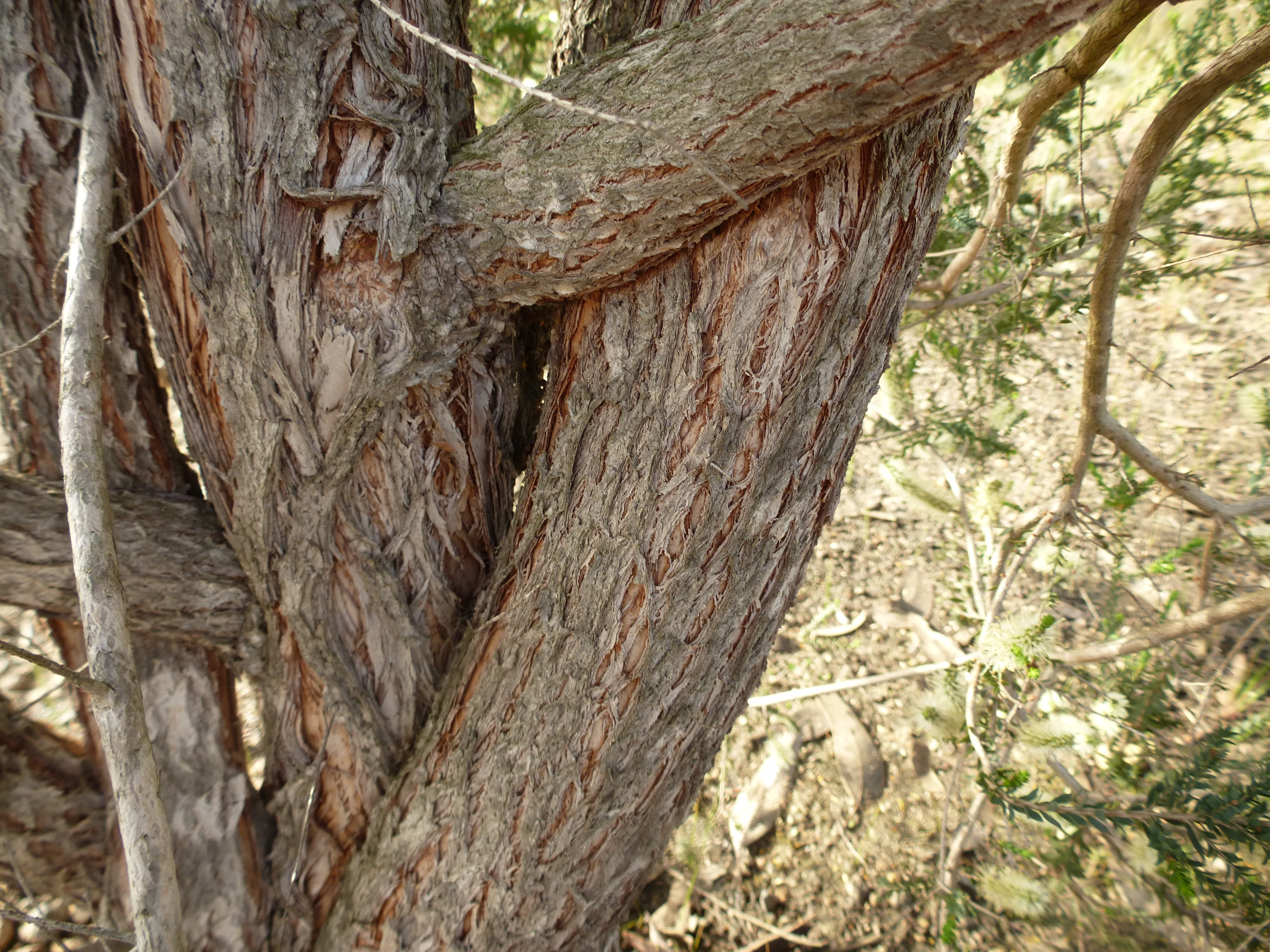Melaleuca viminea on:
[Wikipedia]
[Google]
[Amazon]
''Melaleuca viminea'', commonly known as mohan is a plant in the myrtle family



Myrtaceae
Myrtaceae, the myrtle family, is a family of dicotyledonous plants placed within the order Myrtales. Myrtle, pōhutukawa, bay rum tree, clove, guava, acca (feijoa), allspice, and eucalyptus are some notable members of this group. All speci ...
and is endemic
Endemism is the state of a species being found in a single defined geographic location, such as an island, state, nation, country or other defined zone; organisms that are indigenous to a place are not endemic to it if they are also found elsew ...
to the south-west
The points of the compass are a set of horizontal, radially arrayed compass directions (or azimuths) used in navigation and cartography. A compass rose is primarily composed of four cardinal directions—north, east, south, and west—each se ...
of Western Australia
Western Australia (commonly abbreviated as WA) is a state of Australia occupying the western percent of the land area of Australia excluding external territories. It is bounded by the Indian Ocean to the north and west, the Southern Ocean to th ...
. It is variable in size and form from a densely branched, small shrub to a small tree. It has become naturalised locally in southern Victoria
Victoria most commonly refers to:
* Victoria (Australia), a state of the Commonwealth of Australia
* Victoria, British Columbia, provincial capital of British Columbia, Canada
* Victoria (mythology), Roman goddess of Victory
* Victoria, Seychelle ...
.
Description
''Melaleuca viminea'' grows to in height and has fibrous or papery bark. Its leaves are arranged in opposite pairs, each leaf long and wide, linear to narrow oval in shape, tapering to a point. Its flowers are in heads, at or near the ends of the branches in groups, in diameter composed of 5 to 50 individual white or cream flowers. Thestamen
The stamen (plural ''stamina'' or ''stamens'') is the pollen-producing reproductive organ of a flower. Collectively the stamens form the androecium., p. 10
Morphology and terminology
A stamen typically consists of a stalk called the filame ...
s are arranged in five bundles around the flower, each bundle having 3 to 16 stamens. Flowers appear from July to November and are described as smelling sickly. The fruit are woody capsules, long.
Taxonomy and naming
This species was first formally described in 1839 byJohn Lindley
John Lindley FRS (5 February 1799 – 1 November 1865) was an English botanist, gardener and orchidologist.
Early years
Born in Catton, near Norwich, England, John Lindley was one of four children of George and Mary Lindley. George Lindley w ...
in '' A sketch of the vegetation of the Swan River Colony''. The specific epithet
In taxonomy, binomial nomenclature ("two-term naming system"), also called nomenclature ("two-name naming system") or binary nomenclature, is a formal system of naming species of living things by giving each a name composed of two parts, bot ...
(''viminea'') is a Latin
Latin (, or , ) is a classical language belonging to the Italic branch of the Indo-European languages. Latin was originally a dialect spoken in the lower Tiber area (then known as Latium) around present-day Rome, but through the power of the ...
word meaning "pliant" or "willowy".
Three subspecies are currently recognised:
*''M. viminea'' subsp. ''appressa'' Barlow is distinguished by its small leaves, pressed against the branchlets - it occurs in three disjunct populations - Ongerup, Mt Burdett and Yilgarn districts;
*''M. viminea'' subsp. ''demissa'' Quinn ex. Craven mainly occurs in the Walpole- Manypeaks district;
*''M. viminea'' Lindl. subsp. ''viminea'' occurs in the Kalbarri district south to the Busselton
Busselton is a city in the South West region of the state of Western Australia approximately south-west of Perth. Busselton has a long history as a popular holiday destination for Western Australians; however, the closure of the Busselton ...
and Albany districts, and eastwards to the Muntadgin and Fitzgerald River
The Fitzgerald River is a river in the Great Southern region of Western Australia.
Surveyor General John Septimus Roe named the river during expeditions in the area in 1848 after the governor of Western Australia of the day, Charles Fitzge ...
districts; it is naturalised locally in southern Victoria;
Distribution and habitat
This melaleuca is widespread in the south-west of Western Australia. It grows in sandy or clayey soils near watercourses, winter-wet depressions, rocky coastal areas and flats.Conservation
''Melaleuca viminea'' is classified as "not threatened" by theGovernment of Western Australia
The Government of Western Australia, formally referred to as His Majesty's Government of Western Australia, is the Australian state democratic administrative authority of Western Australia. It is also commonly referred to as the WA Government o ...
Department of Parks and Wildlife
The Department of Parks and Wildlife (DPaW) was the department of the Government of Western Australia responsible for managing lands described in the ''Conservation and Land Management Act 1984'' and implementing the state's conservation and e ...
.
References
{{Taxonbar, from=Q6811117 viminea Rosids of Western Australia Myrtales of Australia Plants described in 1839 Endemic flora of Western Australia Taxa named by John Lindley